











 | |
Nova paragliders, Nova wings, Nova Performance Paragliders, Nova's Hong Kong
Dealer, Nova's Hong Kong Distributor, Nova's HK Dealer, Nova's HK Distributo
|
NOVA
HK Dealer: Cecilia, Tel +852 6283 7083, Email: ama8803@yahoo.com.hk
|
|
Company


Staff
查詢
Enquiry:
Cecilia Tel: +852 6283 7083
email:
ama8803@yahoo.com.hk |
Staff


Production |
Pleasure
SUSI
Super Simple.
Super Safe.
EN/LTF A & DGAC
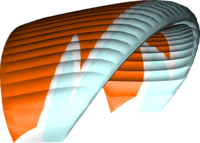
|
Fly Safely
PRION 4
Safe and intuitive.
EN/LTF A
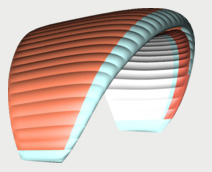
|
Performance
ION 5
The Adventure Intermediate
EN/LTF B
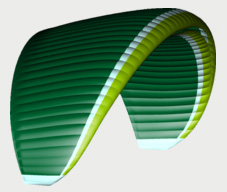
|
Performance
MENTOR 5
Flying beyond boundaries
The benchmark of cross-country wings (EN/LTF B)

|
|
Performance
TRITON 2
Performance with a genuine character.
EN/LTF C
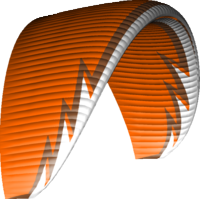
|
The All Rounder
Mentor 5 Light
Light, compact, high performance & safe
EN/LTF B
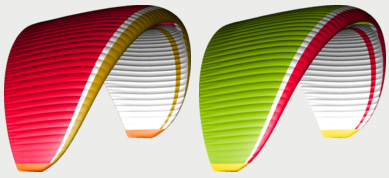
|
A New Era in Paragliding
PHANTOM
Top-end performance with low-end B pilot demand
EN/LTF B

|
|
Performance
SECTOR
For your perfect XC day
EN/LTF C
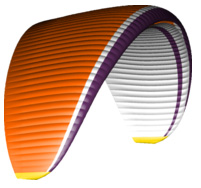
|
Tandem
BION
The tandem choice of professionals.
EN/LTF B
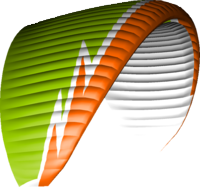
|
Motor
SPEEDMAX
Powered performance.
DULV
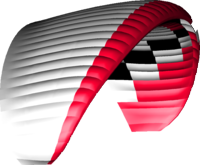
|
Innovation
Intelligent cells (Smart Cells)
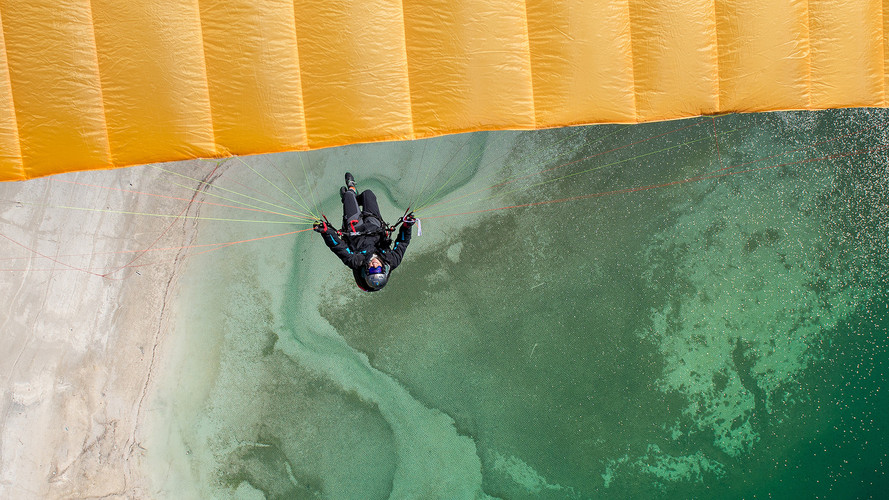
Why build all the cells the same when the load on them is
different? Irregular loading leads to warping and deforming during flight and
this adversely affects the performance of the wing.
Smart Cells counteract these mechanical strength problems. In NOVA paragliders
that have been constructed using Smart Cells the cell widths have been adapted
to the load – basically, intelligent cells. Thanks to this feature the
paragliders fitted with SmartCells fly more calmly, feel more solid and glide
better. Smart Cells give you a tangible benefit.
NEEDLE EYE RIBS: Higher rigidity, Better performance , More stability

Needle-eye ribs are a new interpretation of the method of
constructing four and five piece ribs. Instead of sewing diagonal ribs to one
side of a vertical profile rib and then sewing the continuation to the other
side (the conventional way), our needle-eye rib technology uses slots to allow
the diagonal ribs to traverse the vertical profile ribs. The consequence is
improved manufacturing precision and wing rigidity which has a positive
influence on the performance of the canopy.
Needle-eye ribs permit up to five cells to be spanned with
only two suspension points. This leads to a reduction in the number of lines
required and therefore there is less parasitic drag – which has another
positive impact on performance. So needle-eye ribs have a double positive impact
on the performance of the paraglider.
AIR SCOOP: More pressure, more stability, more performance
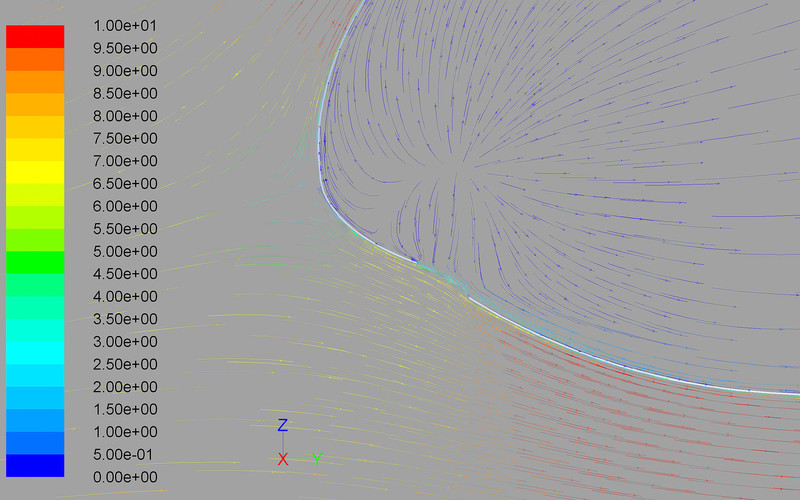
Performance under pressure. As
far back as 2006 (when we were working on the Rookie, DHV 1-2) we were
considering how we could reduce the loss of internal wing pressure during
accelerated flight. The solution: we changed the cell openings so that during
acceleration the intake area is not as reduced than in a conventional cell
opening.
The idea is similar to the ram-air inlet duct on a sports
car: the more intake area the more charging and internal pressure.
Since the Rookie we have continued to develop and optimise
the Air Scoop. Today most of our paragliders are fitted with the Air Scoop. It
improves the collapse resistance, particularly in accelerated flight, and
simultaneously increases performance. So this feature is good for both safety
and performance.
DOUBLE 3D SHAPPING: Performance of smoothness
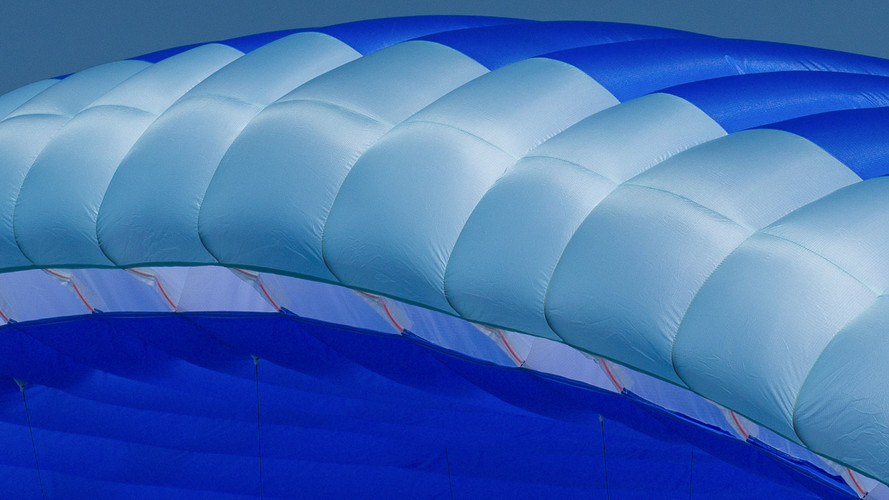
Our anti-wrinkle treatment.
Double 3D Shaping could be called an anti-wrinkle treatment for the nose of the
wing: with two seams across the entire span of the top sail, we reduce the
number of creases which are a consequence of the curvature over two axes. Two
axes, because the sail cloth has to align to the profile form and the ballooning
also determines a radius which the cloth also has to follow.
It is as if trying to fold a piece of paper smoothly around
a ball. Impossible without a few wrinkles.
Double 3D Shaping divides the sections to be folded into
smaller subsections. This allows us to get close to achieving the ideal
crease-free form. The result of Double 3D Shaping: the creases on the profile
nose are clearly reduced and this leads to better performance.
GENUINE THREE-LINER: Fewer lines, more performance
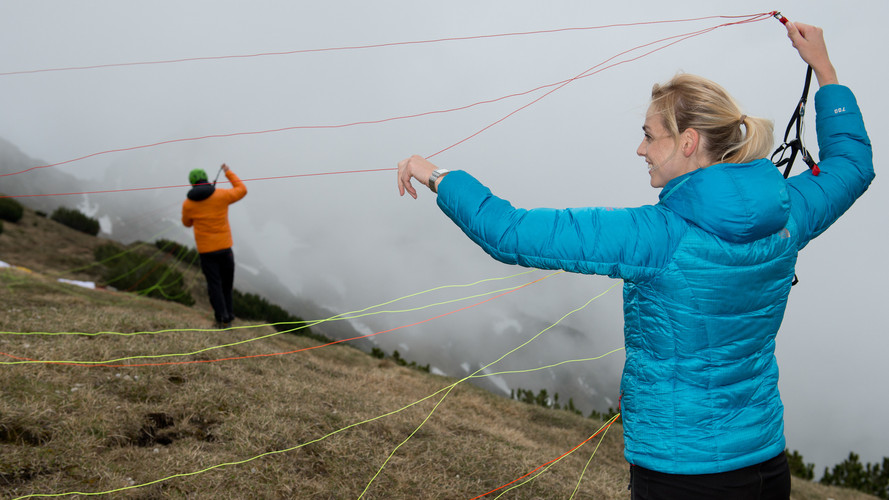
Less is more. Nearly all our paragliders are based on the concept of a
three-liner. Our idea of a three-liner with less line length allows us to
construct wings with very good performance and a high degree of passive safety.
The way we have conceptualised the lines has made it possible to manufacture
wings which are collapse resistant; but when they do collapse, the collapsed
area is generally less extensive. This significantly improves the wing's extreme
flight behaviour.
LOW ASPECT RATION: Take-off and enjoy
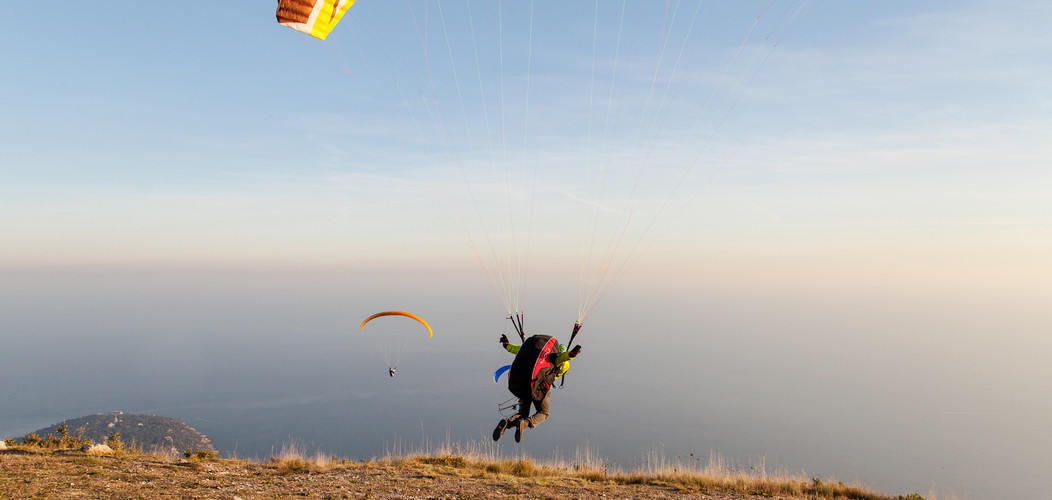
Compact and safe. The aspect ratio of a glider is not the only factor in
passive safety, but still a very important one. For this reason our wings have
the aspect ratio they require. Our design motto is as much as necessary, as
little as possible.
Generally, a lower aspect ratio improves what is called the
‘compactness’ in technical jargon, which is the feeling of having a solid
wing above you; that handles well and appears to have enough mechanical strength
to withstand collapses.
As a rule, higher aspect ratio leads to more demanding
flying characteristics. After collapses there is the danger of cravats. Our goal
is to produce less demanding wings.
LIGHT WEIGHT: Less weight, more fun
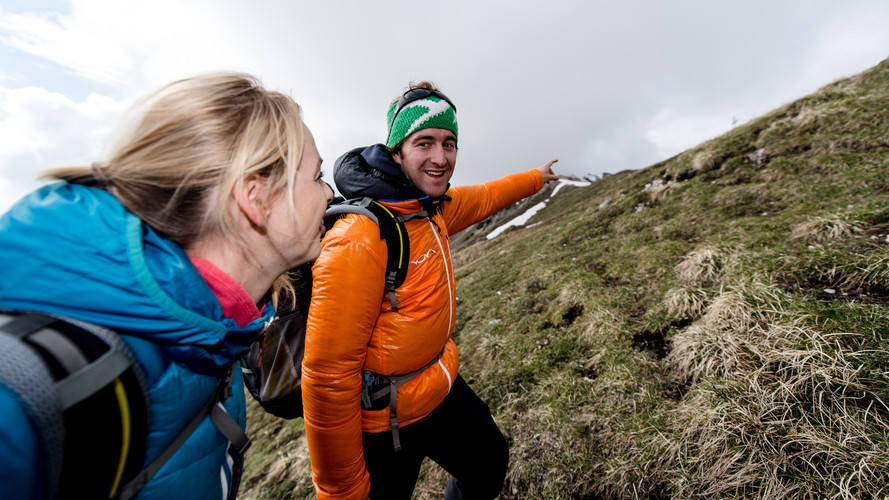
Responsible weight loss. It is
one thing to reduce weight to a minimum. To guarantee robustness and durability
is another. It is very important to us to ensure that the mechanical robustness
of our wings is sufficiently high.
It is essential that the loads created during flight do not
permanently deform the sail cloth particularly the profile ribs as this would
influence the flying characteristics and reduce the performance of the wing.
We test the durability and robustness of the materials we
use in our in-house laboratory. Therefore we know which cloth can be used in
which part of the wing. The result is a well-thought out lightweight wing. As
light as possible. As solid as necessary.
WEIGHT OPTIMISED: Easy to carry, great to fly
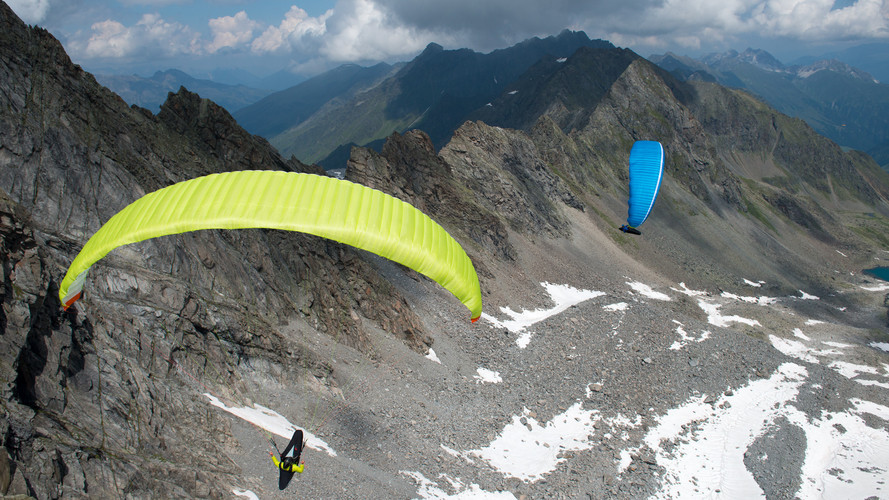
Lightness that excites. The
trend for lightweight paragliders continues. All our weight-optimised
paragliders are not only lighter than conventional models – they are also
equally durable and mechanically stable. Lightweight and durable – the perfect
combination.
These wings offer the perfect package for all pilots who
appreciate reduced wing weight without the need to compromise on durability. As
well as making the wing more comfortable to carry, lighter weight also makes
launching easier.
NOVA Trim Tuning
Through use, paraglider lines shrink or stretch.
Generally, A and B lines stretch, whereas C lines shrink. As a result the
wing flies slower and the handling is less agile. All lines are affected
in this way – regardless of material or manufacturer.
To ensure your complete flying fun and your safety we
developed NOVA Trim Tuning (NTT) with the help of paragliding instructor
and mathematician Ralf Antz. After 15 to 20 flying hours this stretching
or shrinking is basically complete. We recommend that you then immediately
send the wing to us or an authorisied partner.
We will measure all the lines, analyse the trimming
using special software and then put your wing back to its optimal flying
condition. If you take this opportunity of this service, you will benefit
from the 3 Years No Check Required: after the NTT your wing only needs to
be checked again three years after the date of purchase (provided you do
not exceed the number of hours stated in the manual).
Guarantee
terms and conditions ↗
|
NOVA Protect
NOVA Protect is a fully comprehensive protection
package for your paraglider – one year after purchase and after
registering your wing with myNOVA,
your wing is insured against accidental damage. We will repair tears,
replace lines or panels (EUR 50.- deductible
plus VAT).
If your wing is irreparably damaged, we will deduct
the current value of your wing when purchasing a new NOVA paraglider. This
means we offer an exceptional service which gives you the security that
– if the worst should happen – the anguish over a damaged new wing is
reduced.
And the best thing: NOVA Protect is free* with the
purchase of any new NOVA paraglider.
Guarantee
terms and conditions ↗
|
NOVA Full Service & Repair
When it comes to checks we are very particular -
that's why we don't just call it a check, but a NOVA Full Service. We
check all the details of the paraglider: porosity, line lengths, correct
trimming, etc. With our in-house developed software package, the Quality
Assurance Database (NOVA QAD), the person servicing the wing can view
previous checks. You too can view your glider's service history - which is
obviously protected by password.
Like during the NOVA Trim Tuning, the person servicing
the glider will measure all the lines and feeds the data automatically
into the diagnostic software. Using the measurements, the software
calculates the sail trim and suggests possible trim corrections. These are
evaluated by the person servicing the glider and then implemented through
loops at the carabiners.
All measurement and check data is held centrally and
can be downloaded and analysed at any time using the Quality Assurance
Database. This allows us to determine how, in what distribution and to
what extent the lines go out of trim. Using this data we can draw
conclusions and improve our know-how on lines for future gliders. As a
technical and innovative company we are always concerned with further
development and safety.
Guarantee
terms and conditions ↗
|
3 Years No Full Service Required
Imagine two years have passed and you have to do your
2 year check. Then fly a wing from NOVA! If your wing has had the NOVA
Trim Tuning, then we will extend the period until the next service check
from two to three years (from date of purchase) – provided you do not
exceed the number of hours before a service is needed, as stated in the
manual.
The extension of the interval before the next service
allows you to concentrate on what you enjoy: the flying. We at NOVA wish
you great flights!
Guarantee
terms and conditions ↗
|
4 Years On Materials
For additional peace of mind, we guarantee your
paraglider for a further three years* as standard. This guarantee covers
material as well as well as workmanship.
If your NOVA Trim Tuning and a NOVA Full Service was
completed by an authorised NOVA partner, 4 Years On Materials comes into
effect and this extends the guarantee to four years*. If we are unable to
repair the problem, we will deduct the current value when purchasing of a
new NOVA paraglider.
*Guarantee
terms and conditions ↗
|
Quality Assurance Database
To us, a paraglider is more than just a few kilograms
of plastic. We breath digital life into it. Registration at MyNOVA is its
birth certificate; and the service data for its entire life is collected
in our Quality Assurance Database. For the following two reasons our
long-running system is not only practical, it is also vital for continuing
quality assurance:
 | Firstly, thanks to a user account our clients have unlimited access
to all their important data - for example, the NOVA Full Service log,
Trim Tuning data or even a change of owner. |
 | Secondly we gain a deeper insight into the durability of the
material and lines through the collection of this data. This helps us
inform our clients quickly in case of problems. Also, it helped/helps
us to decide which materials are most suitable for everyday
paragliding. It assists us to keep producing better paragliders. |
NOVA approved service centres also have access to the
database. The person responsible for the service can gain information on
the wing before even opening it up. The Quality Assurance Database
therefore improves the knowledge transfer - in the interest of our
customers.
Query
of check data ↗
Guarantee
terms and conditions ↗
|
How
do I hold the brake line correctly?
How a pilot holds the brakes is a matter of personal
preference - but it does have a marked influence on the handling and flying
characteristics of the wing. We recommend a half-wrap. You hold the brake
handle in your palm and twist it half way around your hand so that the brake
line lies between your thumb and forefinger. This shortens the brake travel by
approximately 20 centimetres and this has a positive effect on feedback -
firstly you directly feel the travel of the brake line and secondly, with the
arms positioned higher, it is easier to feel the wing. Due to poor ergonomics,
we recommend against not taking this wrap. The exception is of course when
gliding or during other phases of the flight when steering with the brake is
not necessary. Please note: when changing from not having a wrap to taking the
wrap, the shortened brake travel must be taken into consideration.
Does
Nova test the materials used?
Sail cloth, lines and all other components are subjected
to rigorous testing before they are used in serial production. We not only
test the sail cloth for durability (high porosity or reduced tear resistance
through UV damage or wear) but also for mechanical robustness, for example
stretching. For quality control purposes we regularly take samples during
serial production.
SUSI
or PRION – which is the right wing for me?
If the PRION already offers a high degree of passive
safety, the SUSI is additionally even easier in the handling. For example, the
brake travel on the SUSI is very long, which makes it nearly impossible to
stall the glider unintentionally. In comparison to the SUSI, the PRION offers
more performance and more delicate handling. The best way to choose is to fly
both gliders and decide which is the right wing for you.
How
should NOVA wings be packed?
Simplicity is our motto. Our wings can be packed using a
concertina bag, but it is not essential. In principle, all our wings can just
be stuffed in a packsack. When the wing is folded it is recommended not to
bend the rods unnecessarily. This is particularly true if the wing is to be
stored for longer periods. Furthermore, we recommend careful handling of your
wing.
Can
I shorten the brake lines on a NOVA wing?
The brakes are components relevant to certification -
modification can affect the flying characteristics and extreme flight
behaviour. Because of this, we strongly advise against any modification of the
brake system. It is important that the brake has sufficient travel before it
engages. This is also important so that the wing does not brake automatically
when the speed bar is used. Furthermore a brake that engages too early affects
performance and influences the recovery during incidents, for example during a
collapse or when the canopy goes parachutal.
What
is the correct wing loading for NOVA gliders?
Where the glider is flown in the weight-range is first and
foremost a question of personal preference: anyone seeking a high degree of
agility and dynamic flying should fly our wings at the higher end of the
weight-range. Pilots who are happier with gentle flights with a high degree of
damping will be happier in the middle of the weight-range. Of course, the
flying conditions have a big influence - in turbulent, windy conditions
greater wing loading will bring greater stability; whereas flying the glider
at the lower end of the weight-range makes it unbeatable in weak thermals.
Correct wing loading is mainly a question of personal preference and the
conditions in which you mainly fly. Your Nova dealer will be happy to advise
you!
When
should I send my wing for its first Nova Trim Tuning (NTT)?
During the initial flights the lines are first subjected
to load. This load induces a small degree of stretching and shrinking. These
are not associated with the line manufacturers or the quality of workmanship -
in the factory all NOVA paragliders are trimmed and pre-stretched to within a
very low tolerance. To adjust this stretching or shrinking, we recommend that
the wing is taken for NTT (Nova Trim Tuning) after ten to twenty flights -
after one year at the very latest. Generally, the line lengths remain constant
after the first ten to twenty hours. To use make full use of the NTT, Nova
encourages all pilots to have their wing checked after ten to twenty flying
hours.

|































































